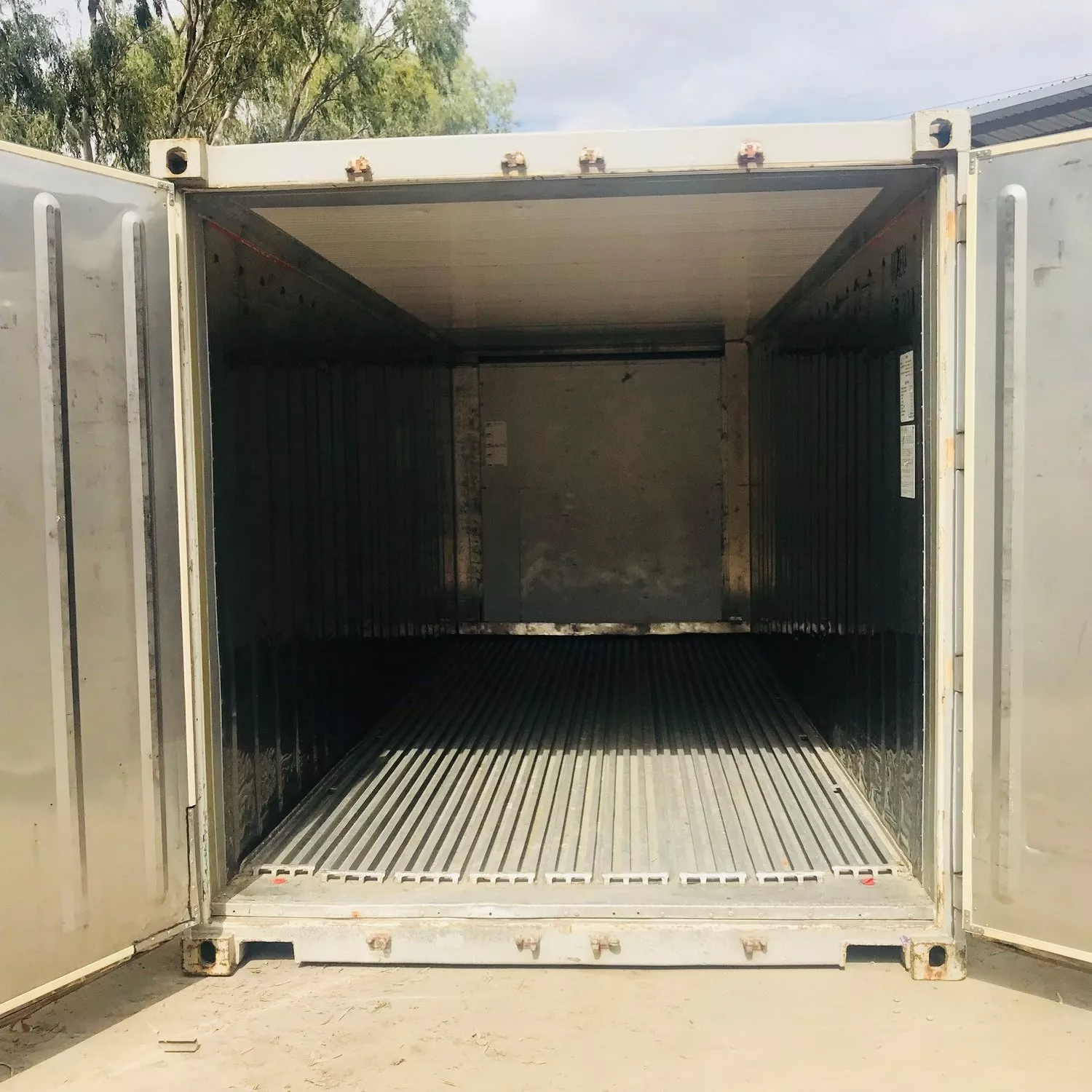Views: 0 Author: Site Editor Publish Time: 2025-03-20 Origin: Site








What Does It Mean? Discover what RF means in shipping terms and how refrigerated containers (reefers) play a crucial role in transporting temperature-sensitive goods worldwide.
Have you ever encountered the term 'RF' while dealing with shipping or logistics and wondered what it means?
RF stands for refrigerated containers, also known as reefers, which are crucial for transporting temperature-sensitive goods.
Refrigerated containers, also known as reefers (RF), are specially designed to transport goods that need to be kept at controlled temperatures. These containers are essential for shipping perishable or temperature-sensitive items.
Reefer containers are widely used in various industries:
● Food Industry: Transporting fresh produce, dairy, meat, seafood, and frozen goods.
● Pharmaceuticals: Ensuring the safe transport of drugs, vaccines, and other medical supplies.
● Chemicals and Electronics: Maintaining optimal temperatures for temperature-sensitive materials.
Refrigerated containers help preserve the quality and integrity of sensitive goods. They prevent spoilage, reduce waste, and ensure products arrive in their best condition.

A: RF stands for "Refrigerated Container," also known as a reefer. It is used for transporting goods that need to be kept at controlled temperatures, such as food, pharmaceuticals, and chemicals.
A: RF containers typically maintain a temperature range from -60°C to +30°C (-76°F to 86°F), ensuring safe transport of perishable and temperature-sensitive goods.
A: RF containers are commonly used in the food industry, pharmaceuticals, and for transporting sensitive electronics and chemicals that require specific temperature control during transport.
A: RF containers use a refrigeration unit with components like a compressor, evaporator coils, and a temperature control system. These components work together to maintain the desired temperature inside the container.
Refrigerated containers rely on a refrigeration unit to maintain a cool and consistent environment.
The refrigeration unit controls the internal temperature by circulating refrigerant through the system.
The compressor compresses the refrigerant gas, which then circulates and absorbs heat from inside the container.
The evaporator coil removes heat by circulating refrigerant gas through it, cooling the air within the container.
This cooling process helps to maintain the container's temperature within the desired range, ensuring optimal conditions for sensitive goods.
Refrigerated containers typically maintain temperatures ranging from -20°F to 75°F (-29°C to 24°C), depending on the cargo's needs.
Reefers maintain a set temperature by continuously circulating cool air. Adjustments can be made depending on the specific requirements of the cargo.
● Modern Reefers: Feature automated systems for temperature regulation.
● Older Models: May require manual adjustments to control the internal temperature.

Proper airflow ensures even temperature distribution, preventing cold spots or uneven cooling inside the container.
Fans and convection circulate the cool air throughout the container, maintaining consistent temperatures and preventing hotspots.
To maintain effective airflow:
● Proper Loading Practices: Avoid overloading or unevenly loading the container to prevent obstruction of airflow.
● Avoiding Blocked Vents: Ensure vents are not blocked, allowing the cold air to circulate freely.
● Use of Pallets and Spacers: Proper spacing of goods ensures that air can circulate around them effectively.
Refrigerated containers are equipped with various essential components that help maintain the desired temperature.
The compressor is the core of the refrigeration system, responsible for compressing refrigerant and keeping the container cool.
These coils remove heat from the air inside the container, ensuring proper cooling.
The condenser cools the refrigerant gas, ensuring the system remains efficient.
Fans distribute the cold air throughout the container, preventing temperature imbalances and cold spots.
The control unit allows users to monitor and adjust the internal temperature as needed.
These ports allow fresh air to enter and gases like CO2 to exit, which is important for certain cargo types like fruits.
Moisture buildup can negatively affect the quality of goods, particularly in the food and pharmaceutical industries.
● Ensure the container is dry before loading.
● Regulate humidity levels to prevent condensation inside the container.
Improper sealing can lead to temperature fluctuations and spoilage of goods. It’s essential to check seals and gaskets regularly before shipping.
Refrigerated containers typically require a 380-460V three-phase power supply. Ensuring stable power during transportation is crucial.
Generators or battery backups can be used to maintain cooling during power outages, ensuring that temperature-sensitive goods remain safe.
This section has explored the key components and operations of refrigerated containers. It emphasizes the importance of proper temperature management to ensure the safe and efficient transport of temperature-sensitive products.
Refrigerated containers (RF) are essential for maintaining optimal temperatures during the transport of perishable and temperature-sensitive goods. These containers preserve the quality of items like food, pharmaceuticals, and electronics by keeping them within a specific temperature range.
When selecting a refrigerated container, consider your cargo's specific temperature requirements to ensure safe transport and maintain product integrity.